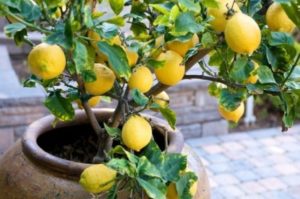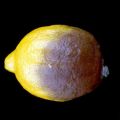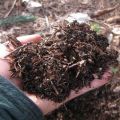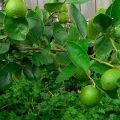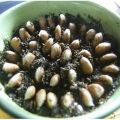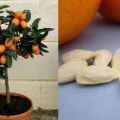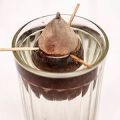How to plant and grow citrus fruits at home from seed
Keeping exotic plants is a hassle, but the aromatic flowering and fruiting is worth the effort. The process of growing citrus fruits at home is carried out from a seed or cuttings. The scent is emitted not only by flowers, but also by foliage. She is a source of phytoncides. Lemon and other citrus fruits have been proven to purify the air and inhibit the development of disease-causing bacteria, which is why they are often seen in hospitals, kindergartens and other public places.
Content
- 1 Features of growing citrus fruits
- 2 How to grow properly at home?
- 3 How to care for citrus fruits
- 4 How to properly water the plants?
- 5 Fertilizing citrus: fertilization scheme
- 6 What fertilizers do citrus trees need
- 7 Trimming and shaping
- 8 Reproduction and transplantation
- 9 How to get through the winter?
- 10 Diseases and pests
Features of growing citrus fruits
Growing lemons, oranges, limes and other citrus trees at home requires certain conditions to be met. First you need to choose a method of growing a tree (from a seed or a cuttings). In addition, much attention is paid to caring for the plant: creating the necessary temperature, humidity, illumination. Plant care principles differ according to seasonality.
How to grow properly at home?
At home, a citrus plant can be grown in two ways: from a seed or a cuttings. Each of the methods has its positive and negative sides.
From bone
Citrus plants grown from seed, more resistant to environmental influences, strong. There is only one explanation - from an early age they get used to the environment. But with flowering they are problematic. Seed trees bloom in the 8-12th year of life, and the fruits are not always pleasing with taste. For an earlier flowering, the plant must be grafted. For a stock, a stalk of an adult tree is needed.

To obtain a tree in this way, you must:
- Select planting material: the fruit must be ripe, undamaged, of high quality.
- Wash the bone from the pulp, soak in water for a day.
- Place in prepared soil to a depth of 2 cm.
- Use citrus mix for planting.
- Young plants do not tolerate transplanting well; a transshipment method is used for them. We recommend using a container of about 2 liters with good drainage.
- Cover the ground with a film, place the container in warm and dark.
The germination time ranges from 2 weeks to 2 months. There can be several sprouts from one seed. You need to leave the strongest, cut the rest to soil level.
By cuttings
Cuttings taken from a fruiting tree root well.

This requires:
- Prepare a container with sand (coarse).Rinse it thoroughly to remove impurities. Can be used with a portion of light leaf humus. Put a layer of expanded clay on the bottom of the container for drainage.
- To create greenhouse conditions, cut a transparent plastic bottle.
- Cut cuttings from 1-2-year-old branches, up to 12 cm long, should have up to 5 leaves.
- The lower cut is made under the kidney, the upper one - at a distance of 0.5 cm from the last kidney.
- Soak the prepared cuttings in a root growth stimulator.
- Powder the cut of the cutting with charcoal in order to prevent the decay process.
- Place in prepared sand. Sprinkle the sand and the handle with a spray bottle. Irrigation is carried out twice a day.
- Optimum temperature 20-25 aboutC. Cover the stalk with a cut plastic bottle.
After 2-3 weeks, white roots will appear on the lower cut. They are quite fragile, so replanting is necessary only after 1.5 months. Before transplanting, the plant is gradually accustomed to the environment by opening a plastic bottle. Dwell time without bottle is gradually increased.
How to care for citrus fruits
In order for the plant to fully develop, bloom and bear fruit, much attention is paid not only to the correct planting, but also to the conditions of the tree. Citrus plants are quite whimsical.

How to properly water the plants?
For the period of activity (from spring to autumn), citrus trees need abundant watering. The amount of liquid is calculated as follows: 1/10 of the volume of the earth mass.
Soft water is used for irrigation. Lime fluid causes chlorosis of the foliage. It is recommended to use melt water or rainwater. You can soften the watering liquid with vinegar, lemon juice, peat. It also becomes soft when frozen.
Watering is done slowly, over the entire surface of the soil, thus the root system develops evenly, which is important for large plants. The next watering is carried out when the soil has dried out to a thickness of up to 5 cm. The tree is watered every 7 days.

Fertilizing citrus: fertilization scheme
Citrus trees need a lot of valuable elements. Citrus fruits quickly absorb the necessary substances, the earth is quickly depleted, respectively, nutrition should be carried out regularly. Full fertilization occurs during the growing season (early spring). Carry out food until autumn.
Fertilization chart
The older the plant and the longer it is in the same pot, the more it needs nutrition.
At the beginning of summer, feeding the tree is necessary to ensure the sugar content of the fruits, reduce their bitterness, which is characteristic of indoor citrus fruits.

Top dressing procedure:
- Introduced with water.
- Only a healthy plant is fertilized. If the tree is sick, nutrition will only weaken the low immunity.
- During the wintering period, food is made no more than once.
- In the spring, when transplanting into a new pot, feeding is done only after 1.5 months. Mineral fertilizers are used for the flowering plant.
- If the tree does not bloom, it is necessary to add organic matter three times at intervals of 2 weeks. It is recommended to use horse manure, humus, vermicompost.
- Regularly from spring to autumn it is used: nitrogen and potassium - once every 10 days; superphosphate and slurry of manure - once every 4 days.
What fertilizers do citrus trees need
For citrus indoor plants in the summer, a special set of fertilizers is needed. Nutrition is carried out by alternating organic and mineral products. Some fertilizers can be made with your own hands from coffee grounds, tea or sugar infusions. If the house has an aquarium, water from it is the best watering agent, since it contains vermicompost.
Important! Organic and mineral fertilizers must not be used together. This can burn the roots.
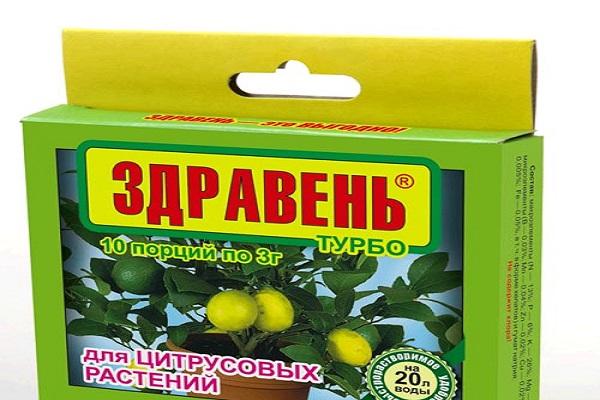
Organic
The best organic remedy is horse manure infusion. Proportion: 100 g per liter of liquid. Infused for about 2 weeks. Instead of horse manure, you can use cow dung or chicken dung (40 g per 1 liter).
Mineral
Urea contains a large amount of nitrogen. It dissolves at the rate of 1.5 g per liter of liquid. Nitrogenous fertilizing is excluded for the period of flowering, the formation of ovaries, otherwise they will fall off. At this time, phosphorus and potash fertilizers are needed. Fertilizing with nitrogenous compounds is resumed when the size of the fruits reaches a diameter of 15 mm.
Magnesium is necessary for the plant, since its deficiency causes chlorosis: loss of color of the leaf plate, and sometimes necrosis: the death of its individual sections.
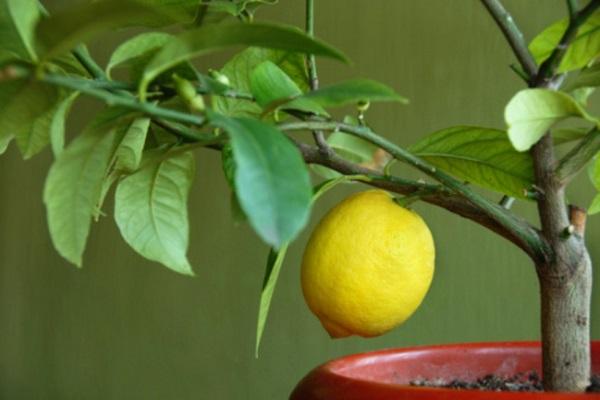
Trimming and shaping
When a seed has sprouted or the cutting has taken root, a sprout is formed. It is recognized as a zero-order branch. Until the sprout has hardened, you need to pinch the top of its head. The height should be about 30 cm. Growth stops, the sprout ripens.
After ripening, it must be cut to 20 cm. The sprout must have at least 4 leaves. Other shoots will grow from them. For the crown, it is ideal if 3 shoots have gone into growth, in extreme cases, 2. They will become sprouts of the first order.
If the shoots do not grow, but only one grows, it must be broken off. Precisely to remove to the ground. Then new kidneys will wake up. You will have to break it out again if they have not started growing. In this way, achieve the development of 3 shoots.

Of the three branches, let the top grow up, the others send to the sides. Pinch the sprouts of the first order when they reach 25 cm. When the sprouts are ripe, cut 5 cm on them, so that 4 leaves again remain on them.
The formation of the second and next levels is carried out according to the same scheme: wait for the sprout to grow back, pinch it off, cut it off after ripening.
In the fifth order, the formation of the skeleton of a tree ends. If the tree has bloomed before the formation of the crown, the flowers must be cut off, as the formation will be long. After the formation of the fifth order, the tree is allowed to bloom.
Important! You need to break the tops. These are shoots growing upward much faster than fruiting branches. They suck out a lot of nutrients and thicken the crown.

In an adult citrus, pruning is done in the spring. But tops are removed regardless of the season. It is necessary to remove broken, improperly growing branches (inward).
Reproduction and transplantation
Reproduction by cuttings and from seed was described above. An important point is tree transplantation. They are quite whimsical and painfully endure this process.
The soil consists of the following composition: turf soil (3 parts), humus (1 part), sand (1 part). The store has the opportunity to purchase ready-made soil for all types of citrus fruits. The transplant is carried out in spring or autumn. Young trees - every year, adults - if necessary.
The capacity should correspond to the volume of the tree root system. The root collar remains above the substrate level. Place drainage on the bottom of the container. Use the transshipment method so as not to injure delicate roots. Water the tree after planting.
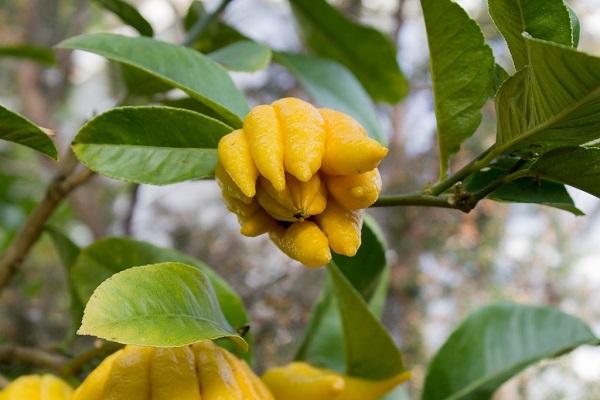
How to get through the winter?
During the wintering period, the optimum temperature for citrus plants is about 10 aboutC. Watering the tree is insignificant, you need to slightly moisten the soil. Low temperatures are important for full fruiting. If the temperature is high in winter, citrus trees may not bloom. Recommended plant location: cold loggias, insulated unheated balconies.
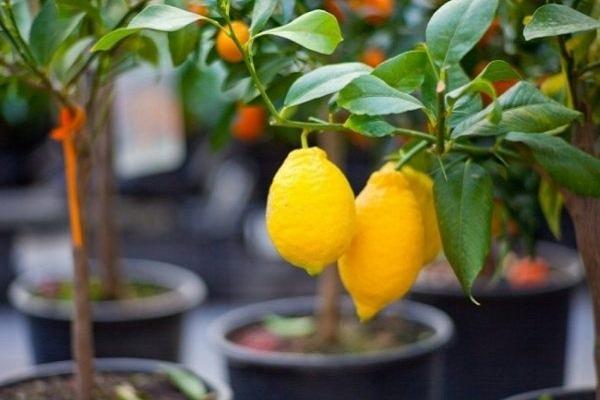
Diseases and pests
If the requirements for care are not followed, the immunity of the tree falls, the plant becomes vulnerable to diseases. These include:
- Root rot. Fungal infection, provoked by constantly damp and heavy soil. Roots, bark of root necks are affected, the tree dies.
- Chlorosis.Photosynthesis is impaired, leaves turn yellowish, young leaves crumble.
- Melanosis. Fungal infection of all parts of the plant. Deep cracks are formed on the trunk, tree branches. Amber-colored gum oozes from them. The leaves are deformed, dark green formations filled with gum are visible on them.
- Mobile (sooty mushroom). All kinds of mushrooms settle on the remains of aphids, scale insects. Black bloom appears on the branches and foliage, interfering with metabolism and respiration.
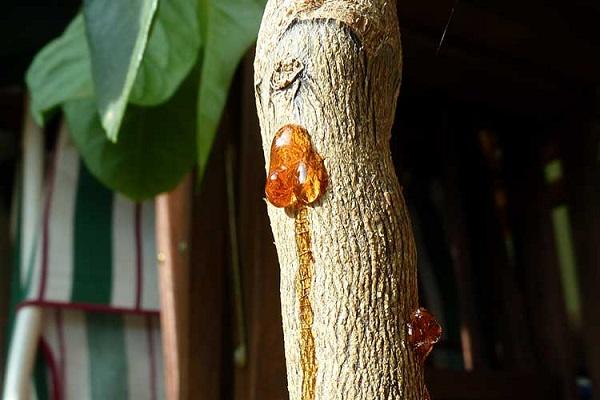
Parasites that harm the plant:
- Shield. An immobile insect that sticks to any part of the tree, covered with a brown shield. It sucks out the sap of the tree, throws out a sticky liquid, which is food for the larvae traveling from their mother to their new habitat.
- Spider mite. Orange-reddish spiders settle in the lower part of the leaf plate, sucking out the tree sap. Damaged foliage is covered with yellow spots, white bloom forms on the inside. The foliage dries and crumbles.
Reproduction and care of citrus trees is not difficult if you follow all the recommendations exactly. And with proper care, the plant will delight you with beautiful fragrant flowers and bright fruits.
